Intro to The visual pathway
1/26
There's no tags or description
Looks like no tags are added yet.
Name | Mastery | Learn | Test | Matching | Spaced |
|---|
No study sessions yet.
27 Terms
What is Simultaneous Contrast?
Simultaneous contrast is the effect where the appearance of a color or brightness is altered by its surrounding colors or brightness, making it appear lighter or darker depending on the surrounding area.

due to lateral inhibition we also see a harsher border contrast
What happens when there is no surrounding area in Simultaneous Contrast?
Without any surrounding area, there is an equal amount of lateral inhibition, which means there is no contrast effect.
What is lateral inhibition?
Lateral inhibition is a neural mechanism where activity in one neuron suppresses the activity of neighboring neurons, enhancing edge detection and contrast.
What is the White's Illusion?
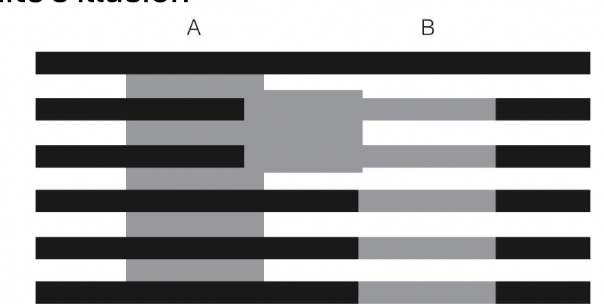
an optical illusion where squares of equal brightness appear to be different due to surrounding visual patterns. It cannot be explained by lateral inhibition and instead operates on principles of belongingness.
Does perception feel direct?
Perception feels direct, but this is an illusion. In reality, the information from sensory input undergoes extensive processing before reaching conscious awareness.
Is the processing of sensory information the same for all senses?
Yes, the process of sensory information being transduced and heavily processed before reaching conscious perception is true for all senses.
Is understanding nuerons enough to understand perception?
No, there is much more processing that happens in the brain. Simply understanding neurons doesn’t fully explain how we perceive the world, as higher-level processes also shape perception.
Does information have a single pathway that it gets processed in?
No there are multiple ways it can be processed.
The visual field
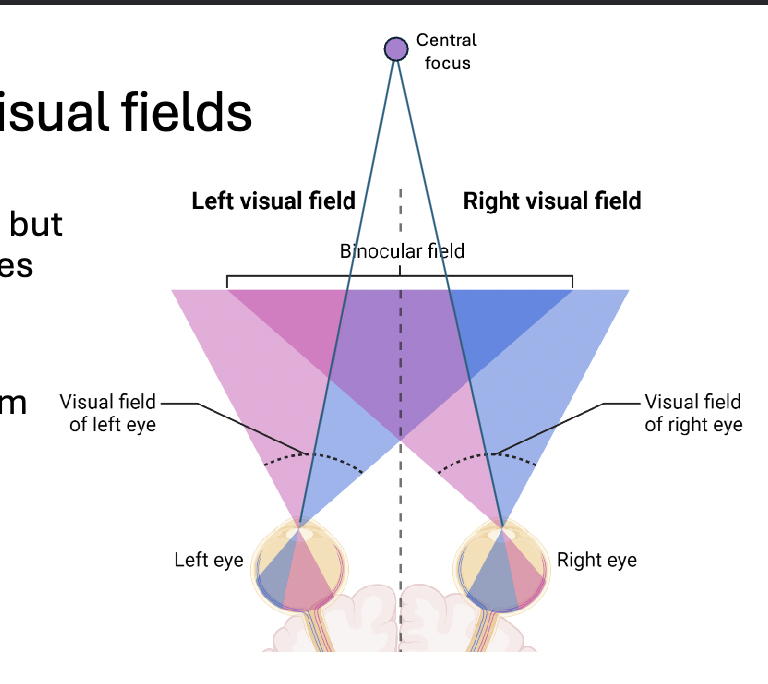
Why can we still view things in our right visual field when our right eye is closed?
because of overlapping of visual fielfs
Ocular dominance
You prioritize vision being received from one eye rather than the other (like right handed or left handed.
Contralateral visual field
means the opposite side. In the visual pathway, each hemisphere of the brain responds to the visual field from the opposite (contralateral) side of the body.
e.g the left visual field is processed by the right side of the brain and vise versa.
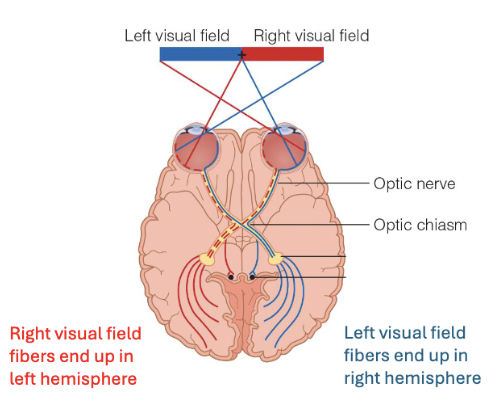
Ipsilateral
same side
Contrateral processing
At the optic chiasm, the optic nerves bringing information from each eye cross over. The nerves carrying information from the left visual field go to the right side of the brain, and those from the right visual field go to the left side of the brain.
approx 60% of the optic nerves cross over.
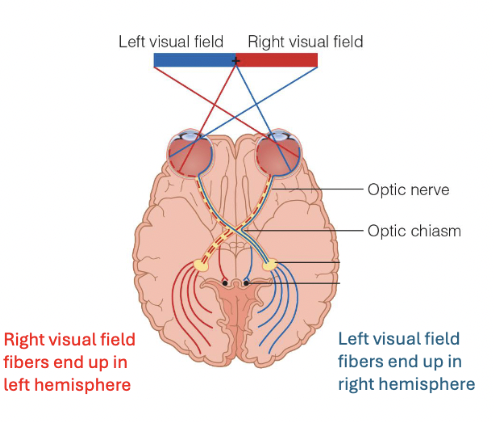
After the optic chiasm, the majority of the optic nerves go to_________
90% of the optic nerves go to the lateral geniculate nucleus (LGN)
Lateral Geniculate Nucleus (LGN)
a part of the thalamus, where the visual information is processed and forwarded to the visual cortex.
What happens to the remaining 10% of optic nerve fibers after the optic chiasm that dont go the LGN?
About 10% of optic nerve fibers bypass the LGN and go to other brain structures:
The superior colliculus
Pretectum
Suprachiasmatic nucleus.
Superior colliculus function
The superior colliculus is involved in controlling eye movements and head movements in response to visual stimuli.
Pretectum function
The pretectum is responsible for regulating the light reflex in the pupils, adjusting their size in response to light.
Suprachiasmatic nucleus
The suprachiasmatic nucleus regulates the body's circadian rhythm, which influences processes like melatonin release and sleep-wake cycles.
What happens after the LGN?
the info goes to the visual cortex (striate)
conscious perception
Cortex
outer layer of the brain in charge of higher level functions
Visual pathways
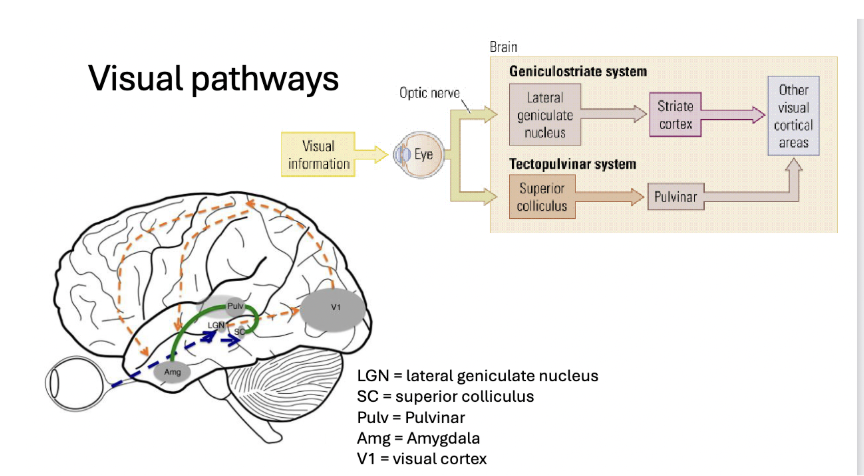
pathway 1. Eye → optic nerve →LGN → Striate → other upper processing
pathway 2. Eye → optic nerve → Superior Colliculus (bypass the v1 entirely) → Pulvinar → Upper processing
Is pathway 2 conscious perception?
No, its subcncious
Amygdala
centre of emotional processing
Blindsight
the ability to respond to visual stimuli the, due to cortical blindness aren’t consciously visible.
this can happen because of damage to V1
ex) blind person who has no concious vision was able to walk around and avoid objects - showing that he’s still able to respond to visual info thats entering his eyes.
Patient TN
Damage to both left and right visual cortex (striate) from a stroke
subjective feeling that they cannot seem but can accurately report info when forced to guess
such as identifying emotion on faces
this is possible because visual information is going through pathway 2 and bypassing the v1